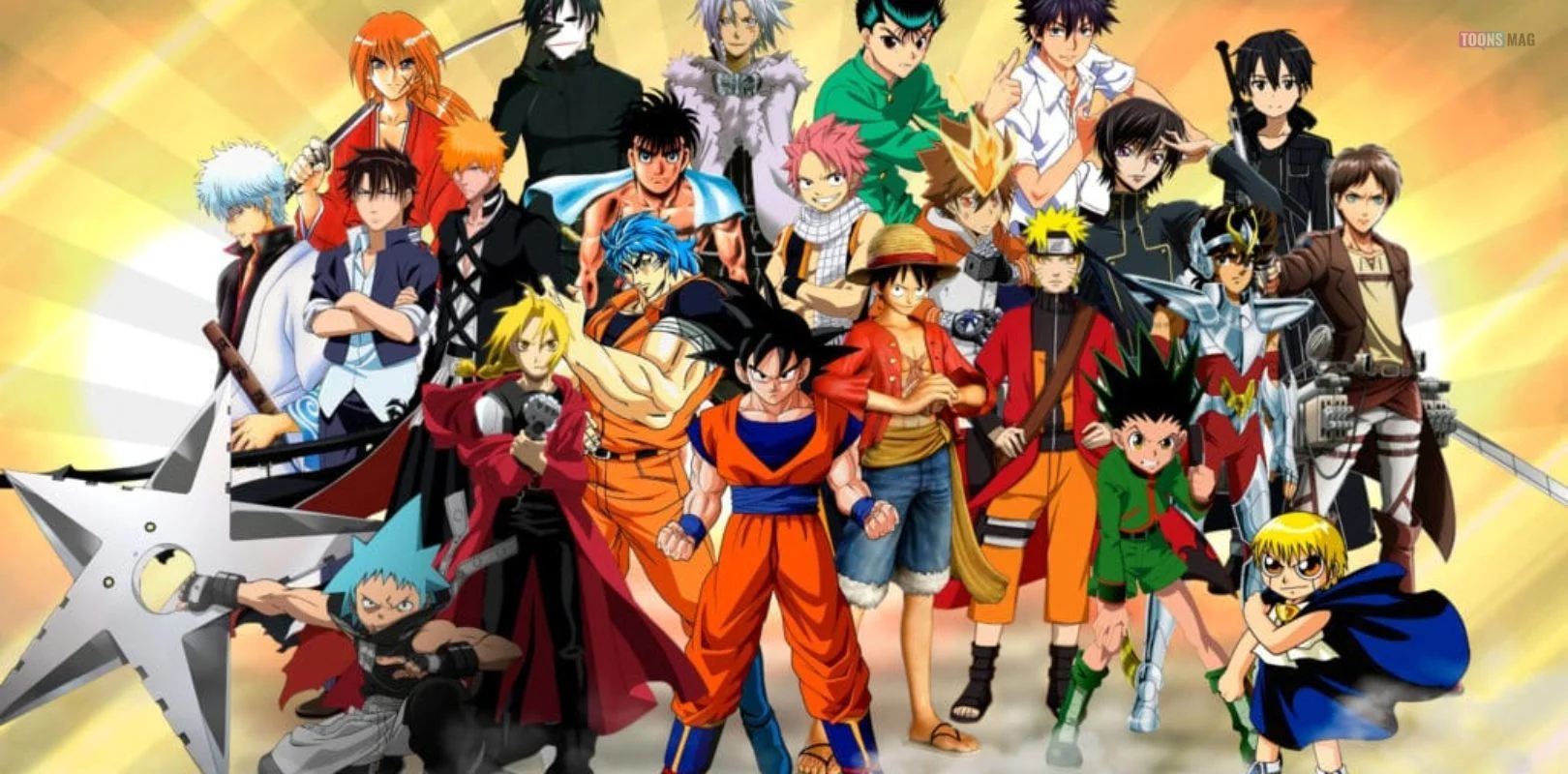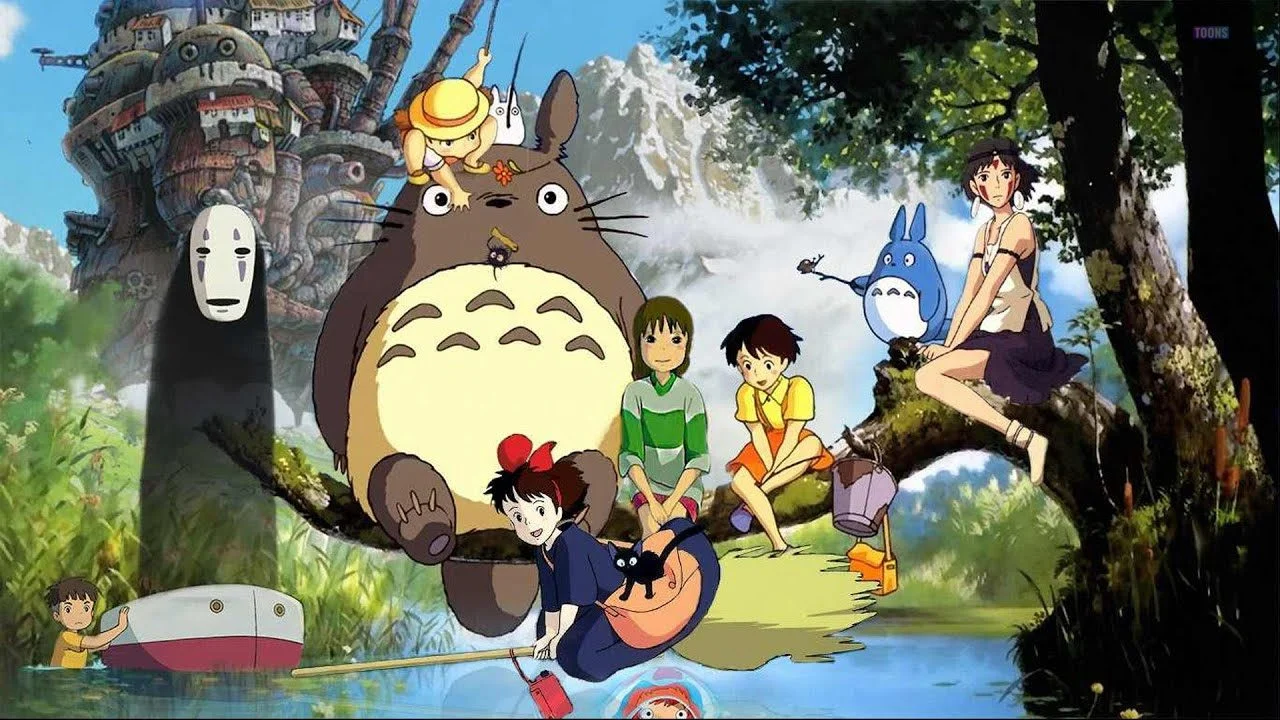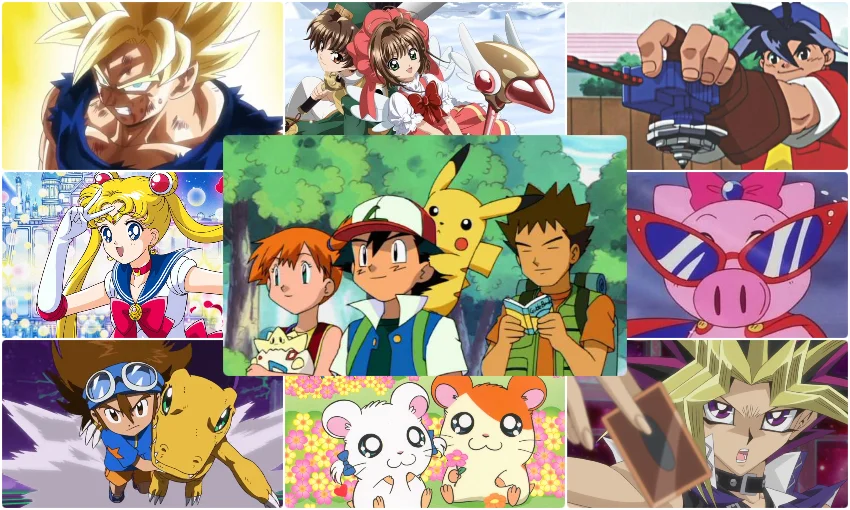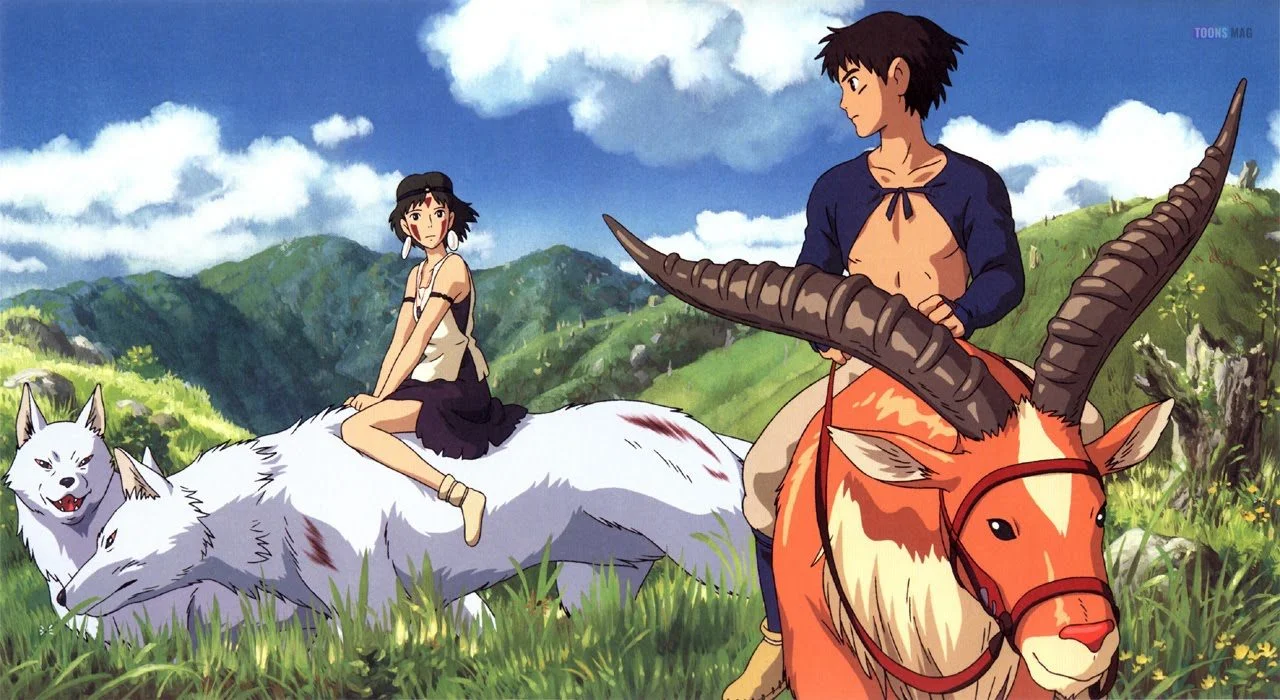Japanese anime, a distinctive form of animation originating from Japan, has evolved into a global cultural phenomenon. Its unique storytelling, artistic styles, and wide-ranging genres have made anime a beloved form of entertainment for audiences worldwide. More than just a style of animation, anime is a diverse and dynamic art form that reflects Japan’s culture, values, and creativity while offering universal themes that resonate with people from all walks of life.
1. What is Anime?
Definition of Anime
- Japanese Animation: Anime refers to animated TV shows, films, and web series produced in Japan. The term “anime” is derived from the English word “animation,” but in Japan, it refers to any type of animation, regardless of origin. However, outside Japan, “anime” is generally used to describe Japanese-originated works.
- Distinct Art Style: Anime is known for its vibrant art style, often featuring exaggerated facial expressions, large eyes, colorful visuals, and dynamic action sequences. The distinctiveness of anime’s aesthetics makes it instantly recognizable, but within the genre, there are various artistic styles and approaches depending on the show, movie, or artist.

Range of Genres and Themes
- Diverse Genres: Anime covers a vast array of genres, including action, romance, fantasy, science fiction, horror, drama, slice of life, and more. Subgenres like mecha (giant robots), isekai (parallel universe), and shoujo (targeted at young girls) showcase anime’s genre diversity.
- Complex Themes: Anime often explores complex, thought-provoking themes such as existentialism, morality, identity, war, and social justice, while also providing light-hearted content and escapism. Shows like Neon Genesis Evangelion and Attack on Titan tackle deep philosophical issues, while series like One Piece and Naruto focus on adventure, friendship, and perseverance.
2. The History of Anime
Early Origins
- Post-War Animation: The roots of modern anime can be traced back to post-war Japan. In the 1950s, Osamu Tezuka, often referred to as the “God of Manga,” revolutionized the industry with the creation of Astro Boy (Tetsuwan Atom). Tezuka’s works were influenced by Western animation, particularly Disney, but he introduced unique narrative techniques that would define the anime style.
- Emergence of Television Anime: Astro Boy aired in 1963, marking the beginning of serialized TV anime. It was followed by other iconic series like Speed Racer (Mach GoGoGo) and Gigantor (Tetsujin 28-go), helping to establish anime as a staple of Japanese television.

The 1970s and 1980s: Growth and Innovation
- The Mecha Boom: The 1970s saw the rise of the mecha genre with shows like Mazinger Z and Mobile Suit Gundam. These series were popular for their giant robot battles but also for their deeper explorations of war, politics, and humanity. Gundam, in particular, became a cultural phenomenon, influencing both anime and toy industries.
- Space Operas and Sci-Fi: The late 1970s and early 1980s gave rise to anime’s space operas, with Space Battleship Yamato and Macross becoming major hits. These shows combined action, romance, and military themes with epic space exploration, capturing the imaginations of fans worldwide.
The 1990s: The Global Explosion
- Anime Goes Global: The 1990s was a pivotal decade for anime, as shows like Dragon Ball Z, Sailor Moon, Pokémon, and Neon Genesis Evangelion reached international audiences. Pokémon, in particular, became a massive multimedia franchise, introducing millions of children worldwide to Japanese anime, games, and culture.
- Diverse Themes and Genres: During this period, anime expanded its thematic scope, with series like Cowboy Bebop, Neon Genesis Evangelion, and Serial Experiments Lain pushing the boundaries of animation with their existential themes, philosophical depth, and experimental storytelling.

3. Anime’s Global Popularity
Anime’s International Reach
- Mainstream Success in the West: Shows like Dragon Ball Z and Naruto were instrumental in bringing anime to mainstream Western audiences, especially in the U.S. Anime conventions, fan clubs, and merchandise exploded, and anime became a permanent part of pop culture. Streaming platforms like Netflix and Crunchyroll have further expanded anime’s global reach, making it accessible to millions of new viewers worldwide.
- Influence on Western Animation: Anime’s influence on Western animation can be seen in shows like Avatar: The Last Airbender and Teen Titans, which borrow heavily from anime’s art style and storytelling techniques. The blending of anime and Western animation has resulted in unique hybrids that appeal to both anime and non-anime fans.
Anime Streaming Platforms
- Online Accessibility: The rise of streaming services has played a crucial role in the global popularity of anime. Platforms like Crunchyroll, Funimation, and Netflix provide simulcasts of anime, allowing international fans to watch new episodes shortly after their Japanese release. This accessibility has expanded anime’s reach far beyond Japan.
- Binge-Watching Culture: Anime’s transition to streaming services has contributed to the binge-watching culture. Fans can now watch entire series in one sitting, further fueling their passion for the medium and encouraging the discovery of new shows and genres.

4. Cultural and Artistic Impact of Anime
Distinctive Art Style
- Iconic Visuals: Anime’s unique art style, with its expressive characters and attention to detail, is one of its most recognizable traits. The large eyes often associated with anime characters, along with stylized hair and exaggerated emotions, contribute to its distinct aesthetic. Shows like One Punch Man, My Hero Academia, and Attack on Titan exhibit anime’s stunning and innovative visuals.
- Symbolism and Metaphors: Anime frequently uses visual metaphors and symbolism to convey complex ideas and themes. The use of nature, traditional Japanese elements, and abstract imagery often carries deeper meaning, elevating anime beyond just entertainment.
Storytelling Depth and Emotional Resonance
- Character-Driven Narratives: Anime is known for its well-developed, multidimensional characters, whose emotional journeys resonate with viewers. Series like Naruto and One Piece are beloved not only for their epic action sequences but also for their characters’ growth, relationships, and personal struggles.
- Exploration of Complex Themes: Anime often dives into complex topics like identity, existentialism, societal structure, and morality. Shows like Death Note, Fullmetal Alchemist: Brotherhood, and Steins;Gate are examples of how anime can explore ethical dilemmas and the consequences of power, technology, and the choices individuals make.

5. Anime’s Influence on Pop Culture
Impact on Fashion and Subcultures
- Cosplay Culture: One of the most visible aspects of anime’s influence on global pop culture is cosplay (costume play). Fans dress up as their favorite anime characters, recreating iconic outfits and appearances in elaborate detail. Anime conventions, such as Anime Expo and Comiket, attract thousands of cosplayers and fans alike.
- Harajuku and Street Fashion: Anime has influenced fashion trends, particularly in Japan’s Harajuku district, where youth adopt eclectic, bold styles inspired by anime characters. Elements of anime fashion, such as school uniforms, exaggerated accessories, and vibrant hair colors, have become part of street fashion in Japan and abroad.
Anime in Mainstream Media
- Hollywood Adaptations: Hollywood has tried to capitalize on anime’s popularity with live-action adaptations of beloved series like Ghost in the Shell and Death Note. While these adaptations often face criticism from fans, they demonstrate anime’s influence on the global film industry and mainstream entertainment.
- References in Western Media: Anime has left its mark on mainstream pop culture, with references appearing in films, TV shows, and even music videos. Artists like Kanye West, Pharrell Williams, and Billie Eilish have drawn inspiration from anime in their music videos, while shows like The Simpsons and South Park have featured anime-inspired episodes.
Anime’s Influence on Video Games
- Visual Novels and JRPGs: Anime’s storytelling techniques and art style have heavily influenced the video game industry, especially in genres like Japanese Role-Playing Games (JRPGs) and visual novels. Games like Final Fantasy, Persona, and Danganronpa incorporate anime’s emotional depth, intricate character designs, and storytelling into interactive gameplay.
- Crossover Success: Popular anime like Dragon Ball, Naruto, and Attack on Titan have also spawned successful video game adaptations, further expanding their influence into the gaming world.
6. Anime’s Future and Continuing Legacy
Innovations in Technology
- 3D and CGI Animation: While traditional hand-drawn animation remains a staple of anime, studios are increasingly experimenting with 3D and CGI animation. Films like Your Name and series like Beastars use a blend of traditional and digital animation, signaling a future where anime can continue to evolve with technological advancements.
- Interactive Storytelling: As technology advances, we may see more interactive anime experiences, where viewers can influence storylines or outcomes, similar to the video game and visual novel genres. This potential innovation could create a new era of viewer engagement with anime.
A Global Cultural Mainstay
- Enduring Popularity: Anime’s reach continues to grow, with new shows, movies, and adaptations constantly being produced. The medium has proven to be more than a passing trend; it has established itself as a permanent fixture in global entertainment.
- Cross-Cultural Influence: As anime continues to break down barriers and find new audiences, its influence on other cultures and entertainment mediums will likely deepen. The exchange of ideas between anime creators and global artists will continue to shape pop culture in exciting ways.

The Enduring Appeal of Japanese Anime
Japanese anime has transcended its origins to become a global cultural force, captivating audiences with its distinctive art, emotional storytelling, and diverse themes. From its early beginnings with Astro Boy to its dominance in the global streaming market today, anime continues to evolve and influence all aspects of popular culture, from fashion and gaming to music and film.
Anime’s ability to tackle universal themes—while reflecting the beauty, complexity, and challenges of life—makes it a powerful medium that resonates with viewers across generations and geographies. Its future seems bright, with the potential for continued innovation and worldwide appeal. Whether through traditional hand-drawn animation or the latest digital advancements, anime remains an integral and enduring part of global entertainment.
Frequently Asked Questions: Japanese Anime’s Impact on Global Pop Culture
How has Japanese anime influenced global pop culture?
- Widespread Popularity: Japanese anime has become a global phenomenon, influencing various forms of entertainment, fashion, and even social movements. Popular shows like Dragon Ball Z, Naruto, and Attack on Titan have captivated audiences worldwide, introducing anime culture to mainstream media.
- Cultural Exchange: Anime has helped introduce global audiences to Japanese culture, language, traditions, and art styles, fostering cross-cultural appreciation and understanding.
What are some of the most influential anime series globally?
- Dragon Ball Z: Introduced the world to high-energy battles, iconic characters, and epic storytelling, shaping action anime for years to come.
- Naruto: The coming-of-age story of a young ninja resonated with international audiences, influencing other works in the genre and spawning a large global fanbase.
- Sailor Moon: This magical girl anime pioneered female superhero characters in global media and influenced fashion and gender representation in popular culture.
- Attack on Titan: Known for its intense action and deep philosophical themes, Attack on Titan gained a global following and impacted the modern anime landscape.
How has anime influenced global fashion trends?
- Cosplay: The global cosplay community has exploded, with fans dressing up as their favorite anime characters at conventions, social media platforms, and events worldwide.
- Streetwear and Harajuku Style: Anime has influenced fashion subcultures like Harajuku, with bold colors, accessories, and anime-inspired designs making their way into global streetwear and haute couture.
- Collaborations with Fashion Brands: High-fashion brands like Louis Vuitton, Gucci, and Supreme have integrated anime characters and themes into their designs, showing how deeply anime has influenced global fashion.

What role does anime play in the popularity of Japanese culture worldwide?
- Cultural Gateway: Anime serves as a gateway to Japanese culture, exposing global audiences to the Japanese language, traditions, food, and landscapes.
- Tourism: Popular anime series like Your Name and Spirited Away have spurred tourism to Japan, with fans visiting real-life locations featured in the anime or attending anime-themed events.
- Traditional Influences: Anime often incorporates Japanese folklore, Shintoism, and historical settings, sparking international curiosity and appreciation for Japanese traditions and history.
How has anime influenced the entertainment industry outside Japan?
- Western Animation: Shows like Avatar: The Last Airbender, The Legend of Korra, and Teen Titans are heavily influenced by anime’s art style, narrative depth, and action sequences.
- Hollywood Adaptations: Films like Alita: Battle Angel and Netflix’s adaptation of Cowboy Bebop show anime’s growing influence in Hollywood, though many live-action adaptations have been met with mixed reviews.
- Streaming Services: Platforms like Netflix, Hulu, and Crunchyroll have significantly expanded their anime libraries, making anime more accessible to global audiences and increasing demand for original anime content.
What impact has anime had on the global fan community?
- Conventions and Events: Large-scale anime conventions such as Anime Expo in the U.S., Japan Expo in France, and AnimeFest in Europe attract thousands of fans, promoting global community building and cultural exchange.
- Fandom Culture: Anime has fostered a vibrant global fan culture, including fan art, fan fiction, AMVs (anime music videos), and forums where fans discuss favorite shows, characters, and plotlines.
- Social Media and Streaming: Platforms like YouTube, Instagram, TikTok, Easybie, and Twitch have seen a boom in anime-related content, with influencers and streamers sharing reviews, reactions, and breakdowns of episodes with millions of followers.

How has anime influenced storytelling and themes in global media?
- Complex Narratives: Anime is known for its intricate storytelling, mature themes, and emotional depth, which has influenced Western TV shows, films, and video games. Themes like identity, morality, and existentialism found in anime series like Neon Genesis Evangelion and Death Note resonate in other mediums.
- Genre-Bending: Anime is often experimental with genre, mixing elements of fantasy, sci-fi, romance, and horror, inspiring other creators to take similar creative risks in their storytelling.
- Diverse Representation: Anime often showcases a wide range of character types, including strong female leads, LGBTQ+ themes, and characters from various backgrounds, contributing to more inclusive storytelling globally.
How has anime shaped global trends in technology and gaming?
- Anime-Inspired Video Games: Video games like Persona, Final Fantasy, and Dragon Ball FighterZ have strong anime aesthetics, influencing game design, character development, and visual storytelling worldwide.
- Virtual Reality (VR) and Augmented Reality (AR): Anime-inspired worlds have been integrated into VR and AR gaming experiences, allowing players to engage with their favorite characters and storylines in immersive environments.
- Anime Streaming Platforms: Platforms like Crunchyroll, Funimation, and Netflix’s anime section have innovated how anime content is distributed globally, influencing how other media genres are streamed and consumed.
How has anime affected academic and scholarly perspectives?
- Anime Studies: Anime has become a topic of academic interest in fields such as cultural studies, media studies, and anthropology. Scholars examine its influence on global culture, gender roles, and identity.
- Social Commentary: Anime often explores deep philosophical, political, and social themes, such as the impact of technology, human nature, and dystopian futures (Ghost in the Shell, Akira), sparking academic discussions worldwide.
What is the future of anime’s influence on global pop culture?
- Expansion into Global Markets: As streaming platforms continue to invest in anime production and distribution, anime’s global reach is expected to grow even further.
- Collaborations with Global Creators: We may see more collaborations between Japanese anime creators and Western or global studios, blending cultural perspectives and storytelling techniques.
- Anime’s Impact on New Media: With the rise of interactive media, augmented reality, and virtual reality, anime is likely to influence new forms of immersive entertainment, solidifying its presence in future technological developments.
Japanese anime has profoundly impacted global pop culture, influencing everything from storytelling and fashion to entertainment and technology. Its deep cultural roots and creative storytelling continue to captivate audiences worldwide, making it an integral part of modern global media.
This post was created with our nice and easy submission form. Create your post!







2 Comments